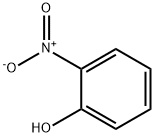Nitazoxanide , ≥98% , 55981-09-4
Synonym(s):
Nitazoxanide;NTZ; 2-(Acetyloxy)-N-(5-nitro-2-thiazolyl)benzamide
CAS NO.:55981-09-4
Empirical Formula: C12H9N3O5S
Molecular Weight: 307.28
MDL number: MFCD00416599
EINECS: 259-931-8
| Pack Size | Price | Stock | Quantity |
| 250MG | RMB23.20 | In Stock |
|
| 1G | RMB36.00 | In Stock |
|
| 5G | RMB42.40 | In Stock |
|
| 25g | RMB95.20 | In Stock |
|
| 50g | RMB175.20 | In Stock |
|
| 250g | RMB767.20 | In Stock |
|
| others | Enquire |
PRODUCT Properties
| Melting point: | 202°C |
| Density | 1.629 g/cm3 |
| storage temp. | 2-8°C |
| solubility | Soluble in DMSO (>50 mg/ml) |
| form | solid |
| pka | 6.18±0.50(Predicted) |
| color | Off-white |
| λmax | 416nm(Phosphate buffer sol.)(lit.) |
| Merck | 14,6567 |
| Stability: | Stable for 2 years from date of purchase as supplied. Solutions in DMSO may be stored at -20°C for up to 3 months. |
| CAS DataBase Reference | 55981-09-4(CAS DataBase Reference) |
Description and Uses
Nitazoxanide (NT Z) has been approved as an orphan drug for the treatment of diarrhea in children (age, 1–11 years) and is associated with giardiasis, but it also is approved for diarrhea caused by crytosporidiosis in patients with AIDS. Crytosporidiosis is a protozoal infection caused by Cryptosporidi um parvum. The condition is uncommon in healthy individuals but can be life-threatening in immunosuppressed patients and those with HIV infections.
For the treatment of diarrhea in adults and children caused by the protozoa Giardia lamblia and for the treatment of diarrhea in children caused by the protozoa Cryptosporidium parvum.
Safety
| Symbol(GHS) |  GHS07 |
| Signal word | Warning |
| Hazard statements | H302-H315-H319-H335 |
| Precautionary statements | P264-P270-P280-P302+P352+P332+P313+P362+P364-P305+P351+P338+P337+P313-P501-P301+P312+P330-P305+P351+P338-P261 |
| Hazard Codes | Xn |
| Risk Statements | 22-36/37/38 |
| Safety Statements | 26-36 |
| WGK Germany | 3 |
| RTECS | VN7830000 |
| HS Code | 2934100000 |
| Toxicity | LD50 orally in male, female mice: 1350, 1380 mg/kg; in rats: >10 g/kg (Murphy, Friedmann) |



